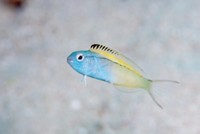Advertisement
Grab your lab coat. Let's get started
Welcome!
Welcome!
Create an account below to get 6 C&EN articles per month, receive newsletters and more - all free.
It seems this is your first time logging in online. Please enter the following information to continue.
As an ACS member you automatically get access to this site. All we need is few more details to create your reading experience.
Not you? Sign in with a different account.
Not you? Sign in with a different account.
ERROR 1
ERROR 1
ERROR 2
ERROR 2
ERROR 2
ERROR 2
ERROR 2
Password and Confirm password must match.
If you have an ACS member number, please enter it here so we can link this account to your membership. (optional)
ERROR 2
ACS values your privacy. By submitting your information, you are gaining access to C&EN and subscribing to our weekly newsletter. We use the information you provide to make your reading experience better, and we will never sell your data to third party members.
Biological Chemistry
Snakes get toxins from toad snacks
February 5, 2007
| A version of this story appeared in
Volume 85, Issue 6
Giving credence to the adage, "you are what you eat," scientists have discovered that the Asian snake Rhabdophis tigrinus acquires its defensive poison by munching on toxic toads (Proc. Natl. Acad. Sci. USA, DOI: 10.1073/pnas.0610785104). To protect themselves from predators, Bufonidae toads secrete cardiotonic steroids, known as bufadienolides, onto their skin. The toxins aren't sufficient to thwart a hungry R. tigrinus, however. After feasting on a toady treat, the snakes store the poison in glands in a ridge on the back of their necks (shown). The steroid backpack then provides the R. tigrinus, which lacks a venomous bite, with a unique chemical defense mechanism. The snakes will sometimes taunt predators into taking a poisonous taste, according to herpetologist Deborah A. Hutchinson of Old Dominion University, Norfolk, Va., chemist Jerrold Meinwald of Cornell University, and their coworkers. In contrast, R. tigrinus snakes living on an island free of the toxic toads possess no poison and are more likely to flee when confronted by a predator.



Join the conversation
Contact the reporter
Submit a Letter to the Editor for publication
Engage with us on Twitter